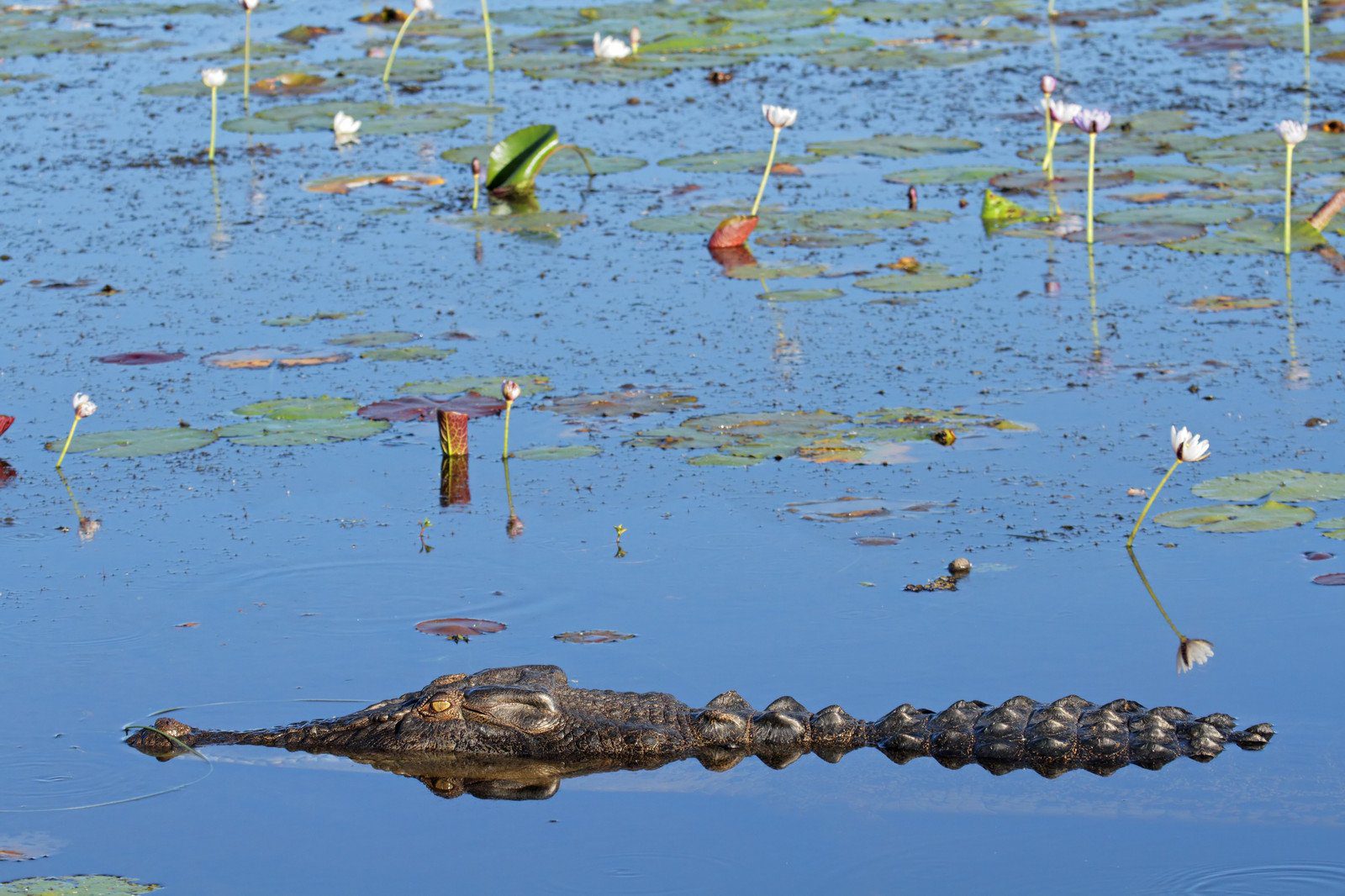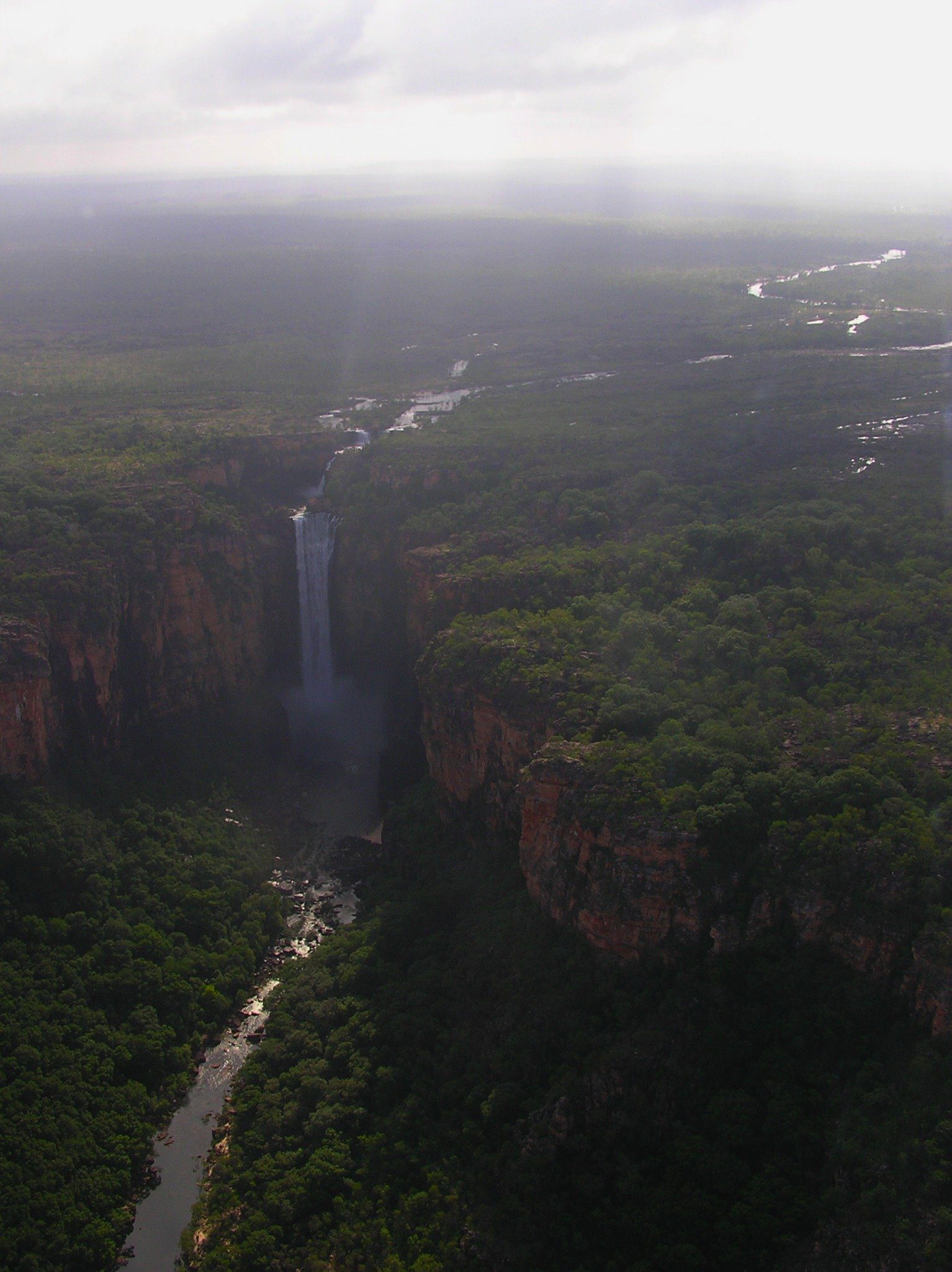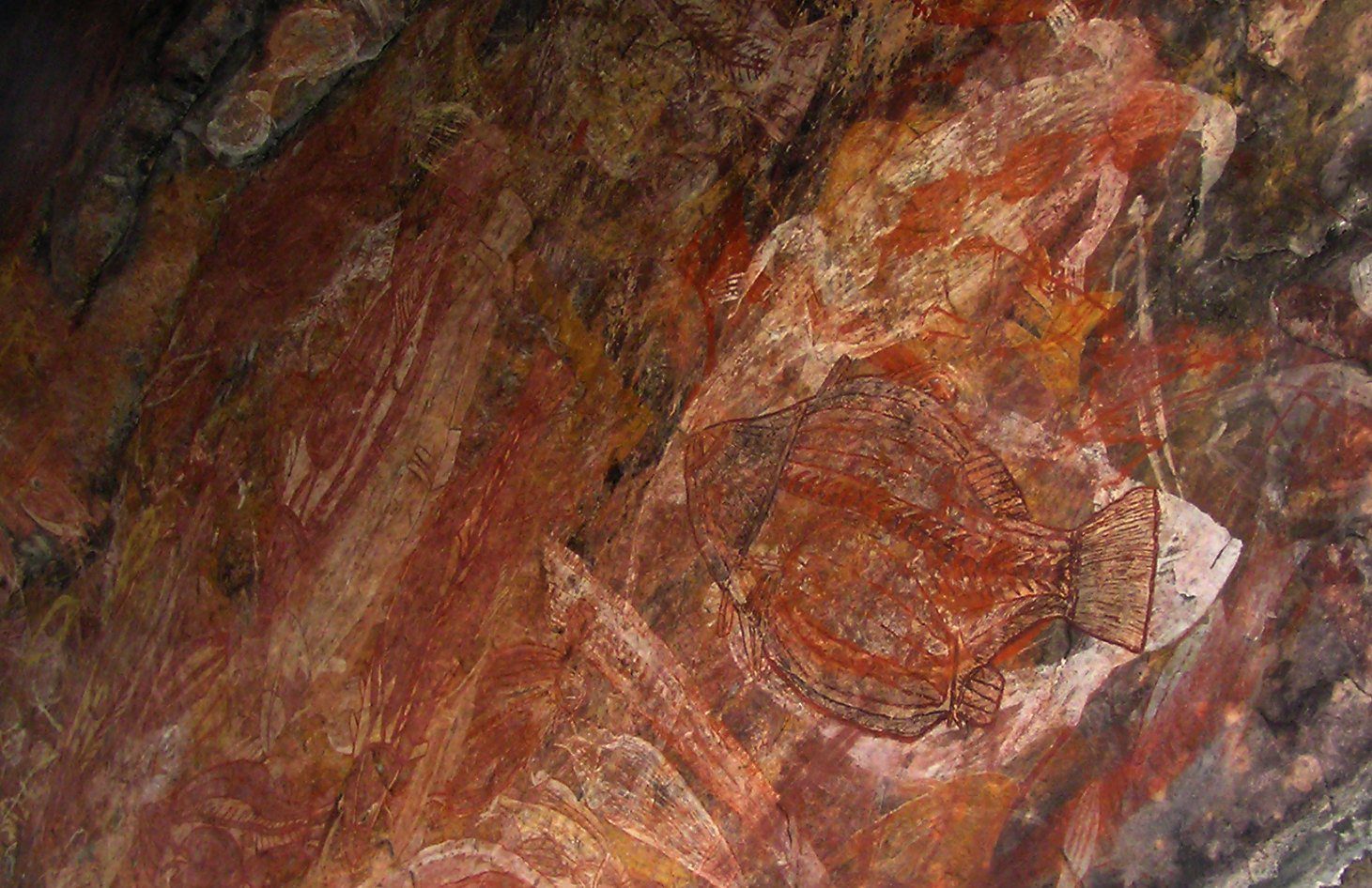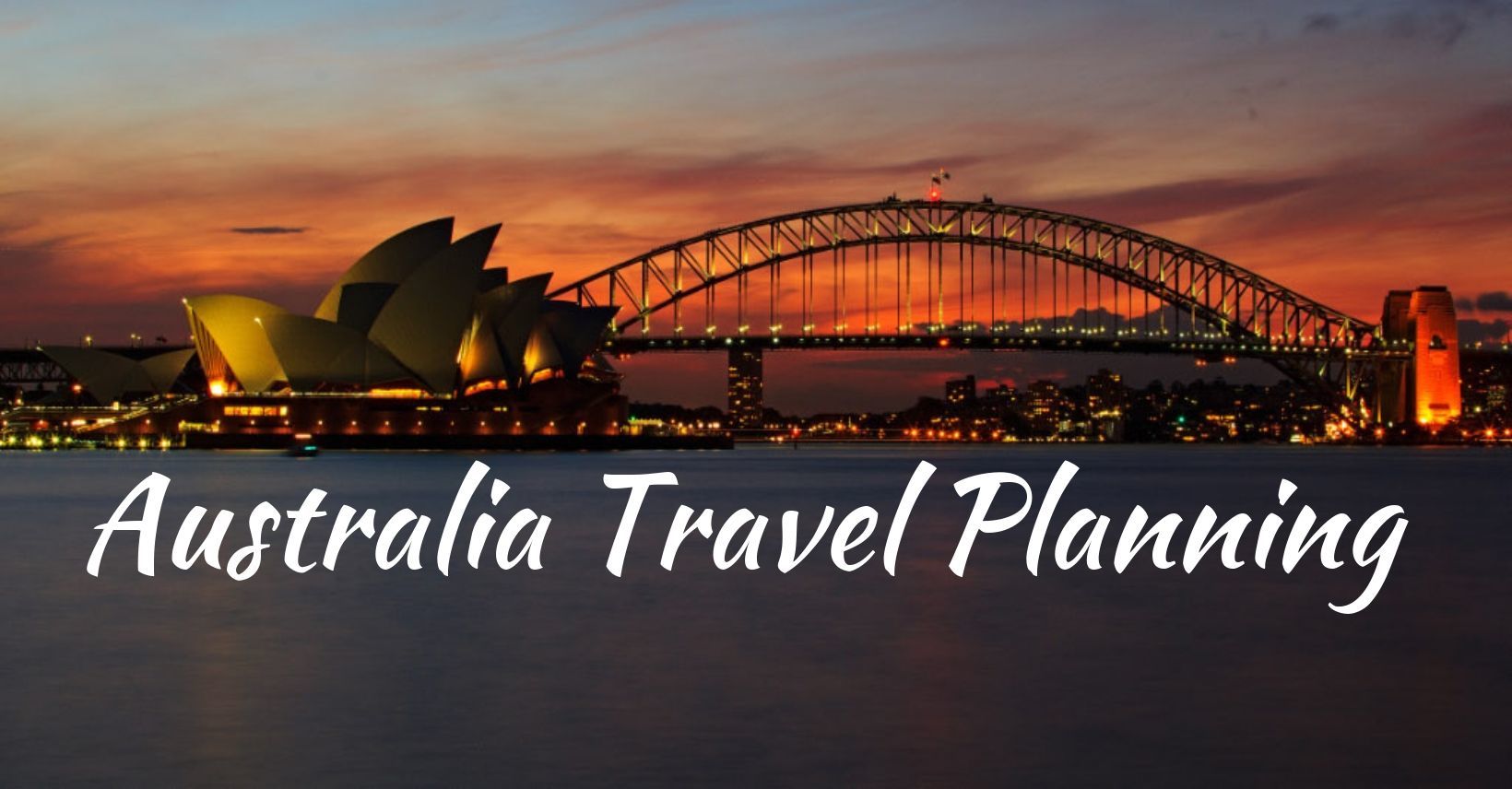As we cruised through the Kakadu billabongs we eagerly anticipated seeing our first crocodile from the safety of our boat. As we were visiting during the Gudjewg monsoon season there was water everywhere which made it harder to spot the crocodiles, but we knew that they were there! Finally we saw a distinctive snout peeking out of the water – and that was only the first of many that we saw during our cruise through the billabong.
A unique feature of Kakadu National Park is the annual cycle of wet and dry seasons. The freshwater wetland areas oscillate between being totally immersed during the Gudjewg monsoon season, through to becoming completely dry in the Gurrung hot dry season. In Kakadu, crocodiles, birdlife and other animals regularly migrate to maintain their access to water. Within Kakadu National Park there are a few permanent wetland areas such as Yellow Water Billabong.
If you plan to visit Kakadu National Park then Yellow Water is a great central location to stay to enable you to make the most of your visit, which also enables you to easily access sunrise, sunset and evening billabong cruise options, as well as waterfalls and Aboriginal culture and rock art sites.
Join the Australia Travel Planning Facebook Group
Check out our Australia Travel Planning Facebook Group – you are welcome to join and it is a great resource to enable you to ask questions about your Australian trip!
Disclaimer: This article contains affiliate links. If you book after clicking on one of these links then we may receive a small commission at no extra cost to you.
Visiting Yellow Water Billabong
The Yellow Water area provides a great range of activities for visitors to easily access the Kakadu wetlands all year round. The daily Yellow Water Cruise enables visitors to take a short cruise through the wetlands area, with the sunrise and sunset cruises being very popular options. During the cruise visitors can see an amazing array of wildlife, including saltwater crocodiles (which can live in both freshwater and saltwater habitats), over 60 species of bird life and many other creatures such as the northern snake neck turtle. The billabongs themselves are of interest to see the unique landscape of lush green trees, grasses, lilies and water lilies.

A great alternative option is to go on the Yellow Water Fishing Cruise where you can attempt to catch a famous barramundi fish. Barramundi can grow up to a whopping 1.8m long and 60kg in weight and are regarded as one of the best eating fish in Australia. All equipment and an experienced fishing guide is provided as part of the cruise.
Visiting the Warradjan Cultural Centre
While you are in Yellow Water there is a great opportunity to visit the Warradjan Cultural Centre which contains exhibits from many of the local Aboriginal clans. Within the turtle shaped building the exhibits include information about various hunting techniques, history and stories. The Warradjan Cultural Centre is open daily from 9am to 5pm and admission is free.
Exploring Around Yellow Water
Yellow Water is located in close proximity to three great Kakadu day trips as follows:
The Nourlangie Rock Art short walk is a 1.5km (0.9 mi) circuit which provide access to multiple Aboriginal art sites and views. This site is located a 46km, 29 mi, 0:39 hr drive north east from Yellow Water which is accessible by 2WD vehicle all year round, and located between Jabiru and Yellow Water. There are additional walks and access depending on the season.
The amazing Jim Jim Falls and Twin Falls are accessible to the south of Yellow Water via a 71km, 44 mi 4WD only road during the dry season. The Spirit of Kakadu Adventure Tours provides 4WD day tours to visit the two waterfalls during the May to October dry season which depart from both Yellow River and Jabiru. During the wet season the only option for visitors to see these amazing falls in full flow is via a scenic flight.

The spectacular Ubirr rock art site is located a 92km, 57 mi, 1:12 hr drive north east of Yellow Water. The rock art can be viewed during a short 1km walking circuit. During the April to November dry season the road is 2WD accessible but during the wet season the road is often flooded.

Accommodation in Yellow Water
In Yellow Water there are two accommodation options. The Cooinda Lodge provides hotel style accommodation for up to four people with a variety of room configurations and includes some extra activities for guests to make the most of their visit. Yellow Water Camping adjoins the Cooinda Lodge and provides budget hostel style accommodation and powered and unpowered camping sites which are all able to access the Cooinda Lodge facilities.
About Kakadu National Park
Kakadu National Park is a destination on many peoples bucket lists and with good reason, due to the amazing diversity of pristine landscapes and traditional Aboriginal culture. The traditional Aboriginal owners of Kakadu National park are the Bininj/Mungguy people who have lived in this area for more than 50,000 years. The Bininj/Mungguy people jointly manage Kakadu National Park with Parks Australia.
Kakadu National Park was World Heritage Listed in 1981 as having both natural and cultural significance, with further areas of land being added to the listing in both 1987 and 1992. The Kakadu wetlands are also listed as a wetland of importance under the Ramsar Convention on Wetlands, as the Kakadu wetlands also provide protection for not just the local birdlife but for migratory birds along the East Asian-Australian Flyaway route.
Getting to Yellow Water
Yellow Water is located east of Darwin, the capital city of the Northern Territory in Australia. Yellow Water is located via a 304km, 189mi, 3:48 hr drive from Darwin. Day time is the safest time to drive along this route to avoid the ever present night time risk of colliding with an animal.
If you prefer not to drive yourself there are a range of tour options available which regularly depart from Darwin.

